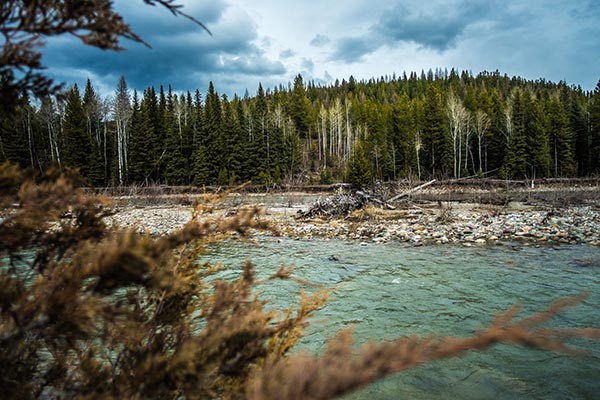Last updated: December 31, 2020
Lesson Plan
What's That Habitat

- Grade Level:
- Upper Elementary: Third Grade through Fifth Grade
- Subject:
- Science,Social Studies
- Lesson Duration:
- 60 Minutes
- Additional Standards:
- NGSS 3-LS4-3. Construct an argument with evidence that in a particular habitat some organisms can survive well, some survive less well, and some cannot survive at all.
Essential Question
What are the basic needs for life that need to be found in a habitat?
Objective
Students will be able to identify their own basic needs for a suitable habitat and understand that wildlife and people have similar basic needs.
Preparation
- Drawing paper and crayons.
Procedure
- List the following words on a chalkboard: food, water, shelter, space. Food and water are easy concepts for the students to understand. Shelter and space are more difficult. Ask the students to explain what shelter and space are, and make sure the meaning of all four words are clear before you proceed.
- Give the students drawing paper and crayons. Ask the students to draw a picture of where they live, including pictures of where they find food, water, shelter and space. Ask the students to label the parts of their drawings where they find their food, water, shelter, and space. For example: Habitat components can be shown in a number of ways. A grocery store down the street may be included for food. Space can be shown as the area outside and inside the house or apartment. Space can also include the neighborhood. (Space actually includes all the areas used for survival.)
- Once the drawings are complete, write two more words on the chalkboard: arrangement, habitat. Tell the students that when food, water, shelter, and space go together in a special way so that animals, including people, can live, we call that place a habitat. The food, water, shelter, and space are in an arrangement that makes it possible for animals to live. Ask the students if they could live in a home where the bathroom was four miles north, the kitchen was 12 miles west, and the bedroom was nine miles east! Some animals, however, do travel great distances in their habitat. What might some of these animals be?
- Ask the students to write the word habitat in big letters at the top of their drawing, talking with them about the meaning of habitat.
- Give the students another piece of drawing paper. Ask them to think of an animal that lives at Waterton-Glacier International Peace Park. Discuss these animals and weed out the elephants and tigers.
- Ask the students to draw a picture of their animal in its habitat, making sure they include food, water, shelter and space in an arrangement that would make it possible for the animal to live. Arrangement should include the type of area the animal lives in, be it forest, streamside, mountains, meadows, or any combination.
- Ask the students to write habitat in big letters on the top of their drawing, talking about the drawings and pointing out the habitat components they have included. Discuss how humans and other animals need food, water, shelter and space. The arrangement is different for each, but all have similar basic needs. Discuss the various arrangements in the students’ drawings.
Variations and Extensions:
“Designing a Habitat” from Project Wild Aquatic
Assessment Materials
Ask the students to write a sentence or two defining habitat on the back of their drawing. Are there habitats inside the International Peace Park which are not found outside the Park? Explain.
Contact Information
Email us about this lesson plan
